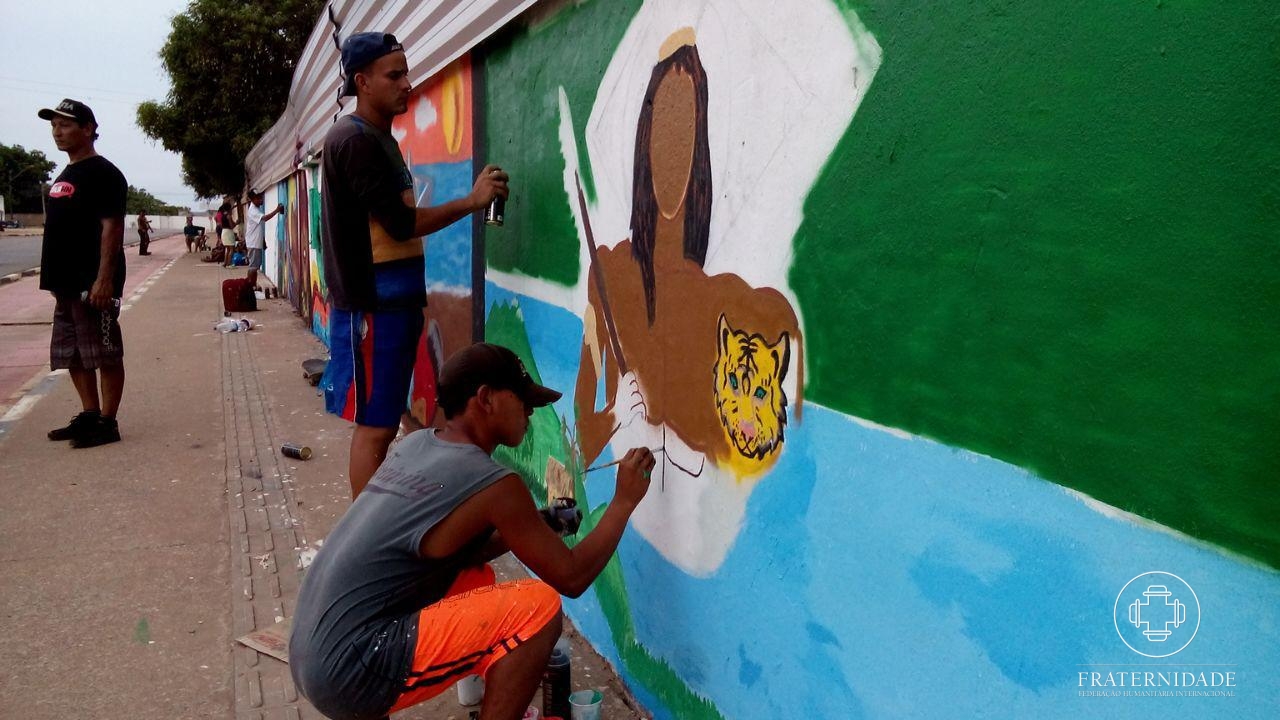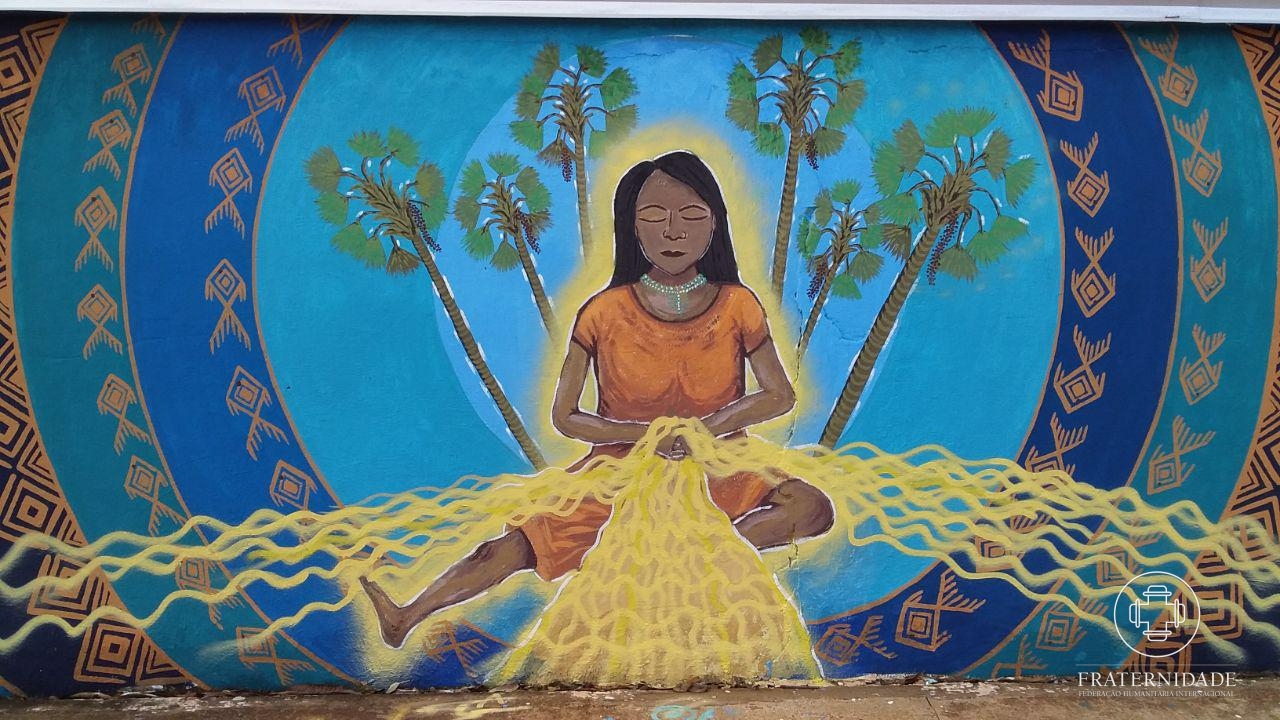“Cultural diversity and migration” was the guiding theme of this year’s edition of the Roraima Graffiti project, which took place November 14th thru 17th, at the Venezuelan indigenous refugee shelter in Pintolândia, carried out by the Federal University of Roraima (UFRR)with support from Fraternidade – International Humanitarian Federation (FIHF).
The adolescents that chose to participate in the workshop had the opportunity to learn the graffiti technique, understand the economic use of material, and experience the practical stages of the process.
They chose the design and each contributed with their particular style, both in the expression of ideas and the work itself as they painted a panel representing their culture.

The commitment and the willingness to participate were evident by the interest in continuing the process even after a day of heavy rain that interrupted the activity.
The teamwork, the peacefulness and the interaction with the artists that presented the workshop brought a positive rhythm to the activity, which ended with each of them signing their own name, indicating participation and satisfaction.

This is the sixth year of the Roraima Graffiti project, conceived of by Leila Adriana Baptaglin, a teacher of the course with a Bachelors’ in Visual Arts at UFRR.
Leila tells us that the project emerged because of the cultural diversity in Roraima, especially in the last few years, due to the growing migration, “as a proposal for integrating the community, besides the pedagogical teaching proposal about what urban art is and how it can be linked to the work of creativity and personal development,” she explains.
She also comments that the support of the International Fraternidade (FIHF) was extremely important, not only with the provision of materials, but mainly with the organizing and support during the whole process.
As for the work with the natives, Leila observes that “when we do this kind of activity, we learn much more than we teach, and that moment was an exchange of experiences and lessons,” and she ends with telling about the questions of the young people regarding new activities, which demonstrates the positive effect, and their interest in urban art, which can indicate a seed for future activities.





